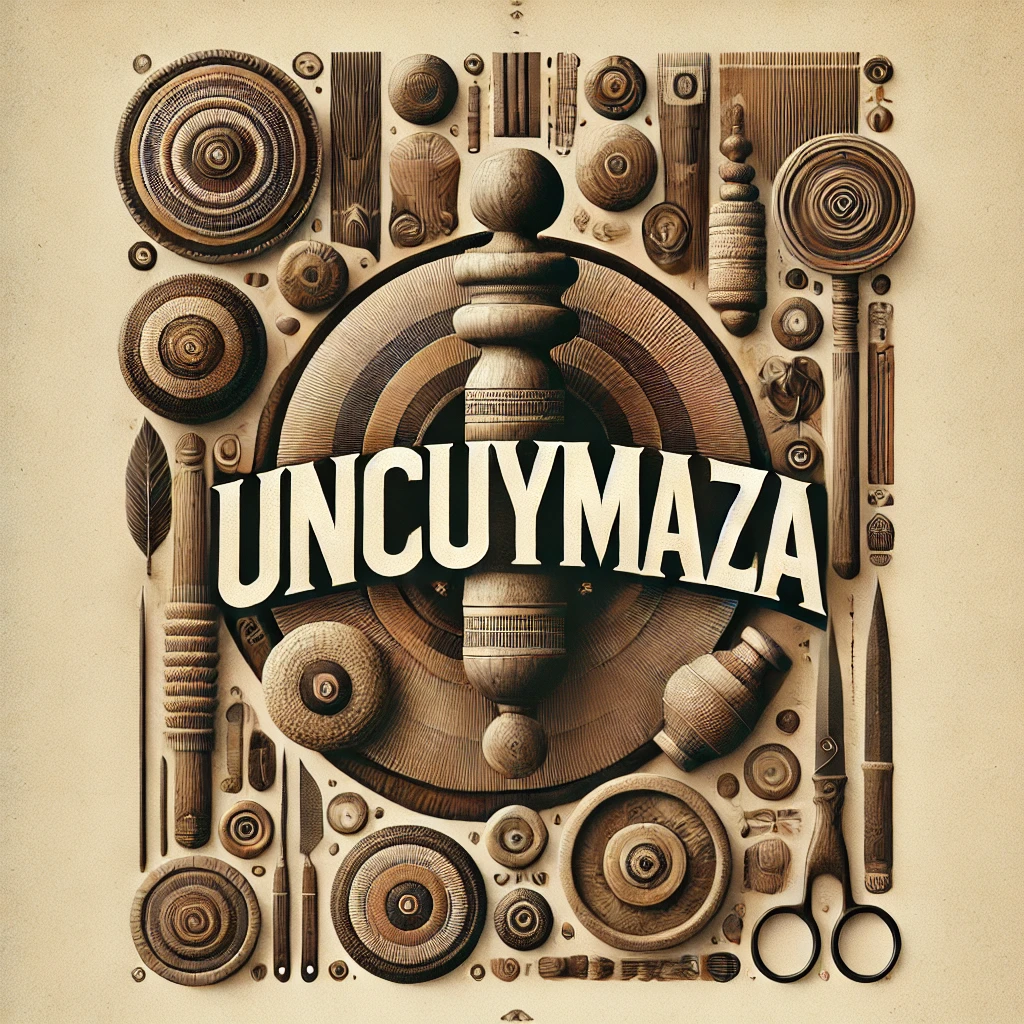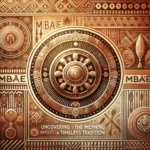The rich tradition of Uncuymaza reflects a deep connection to Andean heritage, a craft that symbolizes spirituality, history, and cultural pride. As one of the most intricate weaving techniques passed down through generations, Uncuymaza continues to play a crucial role in preserving Andean identity. From its vibrant patterns to its ceremonial significance, Uncuymaza is more than just an art form—it’s a living tradition.
In this article, we explore the origins, craftsmanship, and cultural significance of Uncuymaza, while also discussing its place in modern times and its sustainability for future generations.
What is Uncuymaza? An Overview of This Ancient Craft
Uncuymaza is a traditional weaving technique created by indigenous communities of the Andes. It stands out due to its colorful, symbolic designs that tell stories of the land, its people, and their beliefs. More than just fabric, each piece of Uncuymaza serves as a storytelling tool where every pattern carries spiritual and cultural significance.
Artisans use natural fibers like alpaca, llama, and sheep wool, meticulously hand-spinning them and dyeing them with plant-based pigments. This process preserves the ancient ways of crafting textiles while allowing each piece to embody both artistry and cultural heritage.
The Symbolism Behind Uncuymaza Patterns and Colors
One of the most fascinating aspects of Uncuymaza is the symbolic meaning behind its patterns and colors. Each geometric shape, animal figure, and hue used in the textile holds a deeper spiritual or cultural connotation. For example:
| Symbol | Meaning |
| Mountains | Strength, endurance, and connection to the earth |
| Rivers | Life, flow, and sustenance |
| Llamas/Alpacas | Prosperity, survival, and respect for nature |
| Red and Yellow | The sun, fertility, and life |
| Blue and Green | Water and agriculture, representing abundance |
This table shows how the motifs in Uncuymaza go beyond mere decoration—they are records of the Andean way of life, connecting past generations with the present.
Historical Origins: Uncuymaza in Pre-Columbian Times
The origins of Uncuymaza can be traced back to pre-Columbian times when Andean societies valued textiles not only as art but as essential items for religious ceremonies, trade, and social status. Textiles were offered to deities in religious rituals or used to represent wealth and power within communities. Early Uncuymaza textiles were made from natural materials like alpaca wool and dyed with organic substances extracted from plants, insects, and minerals.
During colonization, the tradition faced disruption, but the resilience of the Andean people ensured its survival. While the art form has evolved, its essence remains unchanged, preserving its cultural and sacred significance.
Craftsmanship: The Intricate Art of Weaving Uncuymaza
The craftsmanship behind Uncuymaza reflects centuries-old Andean traditions. Artisans use traditional backstrap looms to weave their intricate patterns. Each step of the process—from spinning wool, dyeing fibers, to weaving—requires patience, skill, and a deep understanding of the craft.
The weaving process is time-consuming and labor-intensive. It can take weeks to complete a single piece, depending on its complexity. Younger generations learn the craft from elders, ensuring the preservation of this intricate skill. For artisans, weaving isn’t just a technical task but a spiritual practice that connects them to their ancestors and the land.
Uncuymaza’s Role in Social and Economic Integration
Historically, Uncuymaza played a significant role in the social and economic fabric of Andean society. The textiles were not only used for ceremonial purposes but also as currency for trade. The intricate patterns often conveyed social status, and the craftsmanship of a family’s textiles could signal their place within the community.
Today, Uncuymaza continues to foster economic integration by creating job opportunities for artisans. As international demand for handcrafted textiles grows, Uncuymaza has become a source of income for many Andean families. In addition to financial benefits, the craft helps maintain cultural ties and ensures that traditional methods are passed down through generations.
The Spiritual and Ritual Significance of Uncuymaza
The role of Uncuymaza in Andean spirituality cannot be overstated. Each piece is often seen as a sacred object, created as offerings to the gods or used in religious ceremonies. These textiles help bridge the human world and the divine, with each pattern believed to carry the prayers and hopes of the community.
During significant life events—such as births, marriages, and even death—Uncuymaza textiles are used as protective and symbolic garments. The act of weaving itself is considered a form of prayer, with the artisan asking for blessings from nature and their ancestors.
Evolution in Modern Times: Uncuymaza and Contemporary Art
While Uncuymaza is rooted in tradition, it has evolved to meet the demands of contemporary life. Many weavers now experiment with blending modern and traditional techniques, creating pieces that appeal to global audiences while maintaining their cultural significance.
The rise of tourism has also impacted Uncuymaza. While some pieces are adapted for the international market, the core methods remain unchanged, ensuring the authenticity of the craft. This fusion of old and new allows Uncuymaza to thrive in modern times without losing its essence.
Sustainability in Uncuymaza Craft: Adapting to Eco-Friendly Practices
As environmental consciousness grows, artisans of Uncuymaza are turning to sustainable practices. They prioritize using natural, eco-friendly materials, such as organic dyes and fibers, to create textiles that are both environmentally responsible and culturally meaningful.
By embracing sustainable practices, Uncuymaza not only appeals to eco-conscious consumers but also ensures the long-term survival of traditional crafting methods. This focus on sustainability is essential in balancing the preservation of cultural heritage with the demands of a modern, environmentally aware world.
Technological Innovations in the Preservation of Uncuymaza
The digital age presents unique opportunities for preserving Uncuymaza. Social media, online marketplaces, and digital archives have enabled artisans to reach a broader audience, helping to market their work globally. Through these platforms, artisans can showcase their craftsmanship, ensuring that the rich tradition of Uncuymaza is accessible to new generations.
In addition, digital technology has made it possible to document and preserve the weaving techniques of Uncuymaza for future generations. Online tutorials and digital archives are helping to keep these ancient methods alive in a fast-changing world.
Engaging the Younger Generation: Securing Uncuymaza’s Future
One of the greatest challenges facing Uncuymaza is engaging younger generations in the craft. With modern career options often more appealing, fewer young people are learning traditional weaving techniques. However, efforts are being made to encourage youth participation through educational workshops, cultural programs, and apprenticeships.
By incorporating elements of modern design and digital marketing, the younger generation can find renewed interest in Uncuymaza, ensuring that this invaluable cultural practice continues to thrive.
Conclusion: Preserving the Cultural and Artistic Value of Uncuymaza
The legacy of Uncuymaza is a testament to the resilience and creativity of Andean artisans. Despite centuries of change, this ancient weaving tradition continues to play a vital role in the cultural, social, and economic fabric of Andean life. Through the symbolism in its patterns, its spiritual importance, and its global recognition, Uncuymaza remains a vibrant representation of Andean identity.
As artisans embrace sustainable practices and technological innovation, the future of Uncuymaza looks bright. By involving younger generations and promoting global awareness, this beautiful tradition can continue to thrive for many more years.
FAQs
What is Uncuymaza made of?
Uncuymaza is traditionally made from natural fibers such as alpaca, llama, and sheep wool, dyed using plant-based pigments.
What do the patterns in Uncuymaza represent?
The patterns often represent spiritual and natural elements like mountains, rivers, animals, and cosmic symbols, each holding cultural significance.
How is Uncuymaza crafted?
Uncuymaza is woven on a traditional backstrap loom using hand-spun, naturally dyed wool. The process is labor-intensive, requiring expert craftsmanship.
How does Uncuymaza contribute to the Andean economy?
By selling handcrafted textiles to a global market, Uncuymaza provides financial support to many artisans and their families while preserving cultural traditions.
How is Uncuymaza being preserved for future generations?
Through educational programs, digital technology, and sustainable practices, efforts are being made to engage younger generations and ensure the continuation of Uncuymaza.


